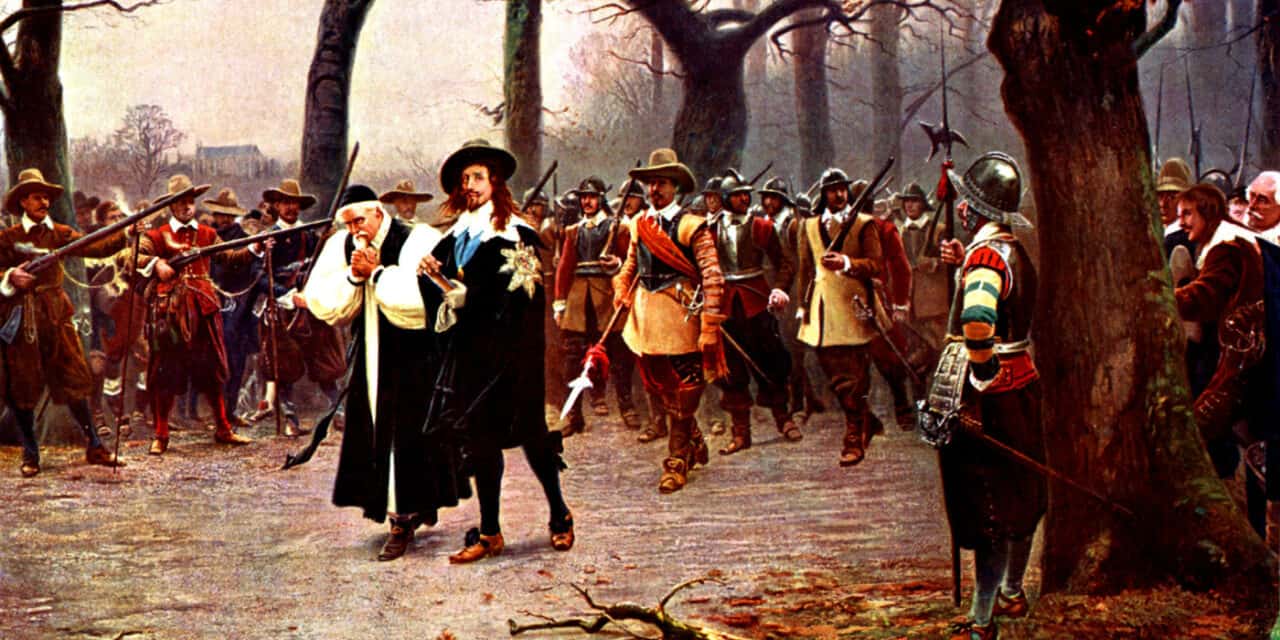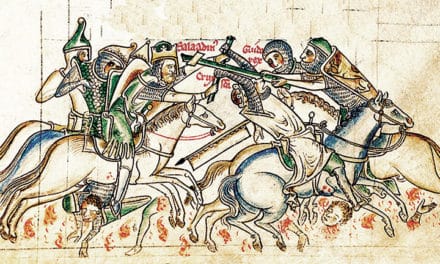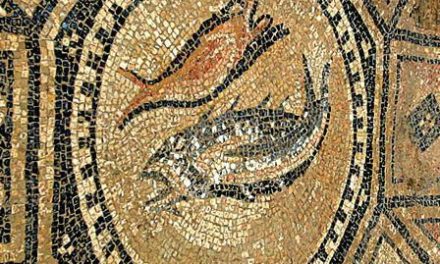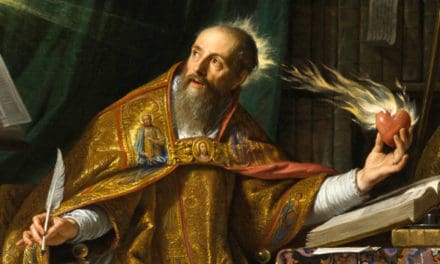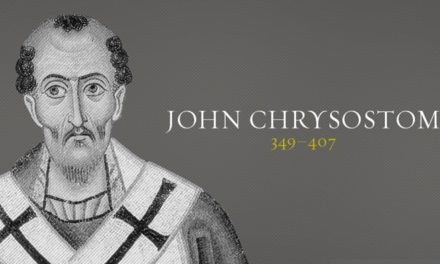In this episode, we’ll take a look at English Puritanism.
In Episode 96, English Candles, we considered the arrival of the Reformation in England and the career of Thomas Cranmer, Archbishop of the Anglican Church. When Catholic Queen Mary ascended the throne, she persecuted Protestants. But when Elizabeth became queen, a new day dawned for the Reformation there.
Queen Elizabeth followed a median course between religious conservatives who sought to retain as much of the ancient practices and beliefs as possible, and Reformers who believed the entire life and structure of the church ought to adjust to what they saw as a Biblical norm. During Elizabeth’s reign, that delicate balance was maintained though tensions surfaced repeatedly. Her strength and decisiveness managed to restrained both sides, barely.
Elizabeth left no heir when she died in 1603. But she’d made arrangements for the succession to pass to James, son of Mary Stuart, already serving as king of Scotland. The transition was fairly smooth, bringing the House of Stuart to reign over England. James VI of Scotland became James I of England. He didn’t find ruling his expanded realm an easy matter. The English regarded him a foreigner. His plan to unite both kingdoms earned him determined opponents on both sides.
Elizabeth’s reforms of England’s economic policies were bearing fruit, especially among the growing merchant class, who resented the James’ royalist policies favoring the nobility. But James’s greatest troubles were with Reformers who wanted to see the English church purged of all Romanish influences. They regarded James as standing in the way. His native Scotland had moved further along that Reformation Road under the work of John Knox. English Calvinists felt the time was ripe for similar changes in their land.
These Reformers didn’t comprise a single group, nor did they agree on all matters. So it’s difficult describing them in general terms. One of the most influential groups was given the name Puritans because they insisted on the need to purify the Church. They opposed many of the traditional aspects of worship the Church of England retained; things like the use of the Cross as a symbol, priestly garments, and the celebration of communion on an altar. They differed over whether there even ought to be an altar; wasn’t a simple table good enough? And if a table, should it be placed so as not to give anyone the idea it WAS an altar. Things like this led to bitter disputes They may have left behind the Scholastic argument of how many angels can dance ion the head of a pin, but they argued over now less inconsequential issues as how much lace their ought to be in a collar.
Puritans insisted on the need for a sober life, guided by the commands of Scripture, and abstinence from luxury and ostentatious displays of wealth. Since a great deal of the worship of the Church of England appeared to them as needlessly elaborate, this caused further objection to such worship. Many insisted on the need to keep the Lord’s Day sacred, devoting it exclusively to religious exercises and charity. They also rejected the Anglican Book of Common Prayer and the use of written prayers in general, declaring such led to insincerity, so that even the Lord’s Prayer, rather than a set of words to be repeated, was to be used as a model for prayer. They weren’t opposed to the use of alcohol, for most of them drank moderately, but they were quite critical of drunkenness. They were also critical of all they considered licentious; like the theater, because immorality was often depicted and because of the inherent duplicity required for acting. They considered it a kind of lying because someone pretended to be someone else.
This tone of super-critical Puritanism would much later move HL Mencken to describe Puritanism as, “the haunting fear that someone, somewhere, may be having a good time.”
A precise definition of Puritanism has been a matter much debate, due in part to its multifaceted influence in not only religious and theological matters but in its impact on England’s politics and society.
Some of the difficulty in defining Puritanism comes from its caricatures that began in the 16th C. As with so many of the labels that have been attributed to movements in Church History, the word “Puritan” was originally a slam applied by critics. They considered Puritans to be peevish, censorious, conceited hypocrites. That reputation, once applied, stuck to them all the way to our day.
In truth, there was a surprising diversity among Puritans. They shared a common theological confession, while differing on how the Church ought to be organized. Some Puritans thought the existing Anglican hierarchy of bishops was fine while others wanted to restructure the Church along more Presbyterian lines. Still others embraced a congregational form of church government. Some advocated separation from the established church, while others remained. Some were royalist, others revolutionary, even to the point of regicide. While Puritans differed in worship styles and expressions of piety, they ALL wanted the English Church to more closely resemble the Reformed churches on the Continent.
Many Puritans were opposed to bishops. They argued that the highly-structured church hierarchy of the Church of England was a late invention, not found in the Bible. They said the Church ought to look to Scripture as its constitution not only for doctrine, but also in its organization and governance. Moderate Puritans responded that the Bible didn’t actually give a prescription for a specific form of Church government. What it had were principles that could be applied in different ways. Others insisted that the New Testament Church was ruled by elders called “presbyters.” Then others claimed each congregation ought to be independent. They were creatively dubbed “Independents.”
Baptists rose mostly among this last group. One of their early leaders was John Smyth, an Anglican priest who decided the Church of England had not reformed far enough. He established an independent, and at that time, illegal, congregation. As it grew, Smyth and his followers fled to Amsterdam. There he continued his study of the Bible, and came to the point of refusing to use translations of the Bible in worship, for only the original text had absolute authority. At church, he would read Scripture in Hebrew or Greek, and translate the text as he preached. Partly through his study of Scripture, and partly through contact with Mennonites—whose pacifism and refusal to take oaths, he adopted—e eventually becoming convinced infant baptism was wrong. He then re-baptized himself with a bucket and ladle and proceeded to baptized his followers.
The move of Smyth and his flock to Holland was financed by a wealthy lawyer named Thomas Helwys, who eventually broke with the ever-reforming Smyth. The breaking point of contention was over the taking of vows. Smyth rejected any form of vow while, as a lawyer, Helwys considered them a necessary convention safeguarding social order. Helwys and his followers returned to England, where in 1611 they founded the first Baptist Church in England.
Eventually, to really no one’s surprise, a disagreement arose among English Baptists over theological issues similar to those that had risen between Calvinists and Arminianists. Those who favored the Arminian-flavored path were called General Baptists while Calvinist-leaning Baptists were referred to as Particular Baptists.
The balance Elizabeth maintained in the Church of England began to wobble under James. While its theology was moderately Calvinist, its worship and governance followed the older Roman order. Puritans feared a movement was under way to return to what they called “Romanism.”
They didn’t trust the new king, whose mother was none other than the Catholic Mary Stuart, AKA Mary, Queen of Scots, who’d been executed by Elizabeth on the charge of treason in plotting to assassinate Elizabeth and take her throne. James didn’t, in fact, favor Catholicism though Puritans assumed he would and hoped to gain concessions. They were repeatedly disappointed. James’ goal was the same kind of absolutist monarchy then in place in France. In Scotland, his Presbyterian subjects hadn’t allowed him to reign as he wished. He thought his chances for absolutism were better in the South. To that end he strengthened the bishops of the English Church as a prop to his own power. He declared, “Without bishops, there is no king,” meaning monarchy is better supported by a hierarchical church structure.
James’ religious policy was similar to Elizabeth’s. The Anabaptists were persecuted because James was offended by their egalitarianism that threatened to up-end the highly stratified English society. For goodness sake; we can’t have peasants thinking they’re as important as nobles. What a catastrophe if humble commoners mixed with blue bloods. So, the Anabaptists with their calling everyone “brother” and “sister” had to be repressed. They were; brutally. And Catholics, who thought James would be their guy, were regarded by him as agents of the Pope, who everyone knew wanted to get rid of James. James said if the pope acknowledged his right to rule and condemned regicide, which a few of the more extreme Catholics pushed for, James would tolerate the presence of Catholics in his realm. Presbyterians, whom the king had come to hate in Scotland, were barely tolerated in England. James did grant them minor concessions, but only to keep them from making trouble.
Tension between Anglican bishops and Puritans grew to a boil during James’s reign. In 1604, Richard Bancroft, archbishop of Canterbury, had a series of canons approved offensive to Puritans. One affirmed that episcopal hierarchy was an institution of divine origin, and that without it there could be no true church. This ostracized the many Protestant churches in Europe that had no bishops. Puritans saw it as provoking a showdown between themselves and the Church of England. Some assumed it was all preparation by the Church of England to reunite with Rome.
James called Parliament to sit for the approval of new taxes to complete some of England’s projects. The House of Commons included many Puritans who joined others in an appeal to the king against Bancroft’s canons. James convened a committee at Hampton Court to consider the canons, over which he presided. When one of the Puritans made reference to the church being governed by a “presbytery,” James announced there would be no closer connection between the monarchy and a presbytery than there COULD be between God and the Devil. All attempts at compromise failed. The only result of meeting was that a new translation of the Bible was approved. It appeared in 1611 and is known today as the KJV. Produced at a high-point in the development of the English language, along with the Book of Common Prayer—the King James Bible became a classic that profoundly influenced later English literature.
But, this marks the beginning of a growing hostility between the House of Commons and the bishops of the Church of England.
Late in 1605, what’s known as the Gunpowder Plot was discovered. A repressive law against Catholics was issued the previous year on the pretext they were loyal to the pope rather than the king. The real purpose of the law was to collect funds. Authorities used it to impose heavy fines and confiscate property. Catholics came to the conclusion the solution was to be rid of the king. A property was rented whose cellars extended below the room where Parliament met. Several wine barrels were filled with gunpowder and set under the room. The plan was to detonate them as the king opened Parliament. This would rid England of James and many Puritans leaders. But the plot was discovered; the conspirators executed. This unleashed a wave of anti-catholic sentiment in England that saw many arrested and imprisoned. James used the whole affair a way to lay heavy fines on Catholics and confiscate more property.
After those first years of his reign, James tried to rule without Parliament. But English law stipulated it alone could approve new taxes. So in 1614, when his finances were desperate, James relented and again convened Parliament. New elections brought in a House of Commons even more stubborn than the previous. So James dissolved it and again tried to rule without it. He turned to the few tariffs he could levy without Parliament’s approval. He borrowed from bishops and nobility.
Then the Thirty Years’ War broke out. Frederick, King of Bohemia, was James’s son-in-law. But James offered no support. English Protestants named James a traitor and coward. Je replied that he WANTED to help, but that the Puritans held the purse and war is expensive! Finally, in 1621, James re-convened Parliament, hoping the House of Commons would agree to new taxes with the proviso that some, at least, of the revenue would support German Protestants in the war. But it was discovered James planned to marry his son and the heir to England’s throne to a Spanish princess, a Catholic Hapsburg! Such an alliance was regarded by the Puritans as an abomination. So, James once again dissolved the House of Commons and arrested several of its leaders. The marriage plans were abandoned for other reasons, and in 1624 James once again called a meeting of Parliament, only to dissolve it anew without obtaining the funds he required. Shortly thereafter, he died, and was succeeded by his son Charles, who’d been a good student of his father’s routine with Parliament.
English Puritans welcomed Charles I to his throne with less enthusiasm than they had his father. Charles said that kings are “little gods on Earth.” Puritans knew this didn’t bode well for their future relations. Nor did it help that Charles immediately married a Roman Catholic princess, Henrietta-Marie de Bourbon, raising the specter of a Catholic heir to the English throne.
The relationship between the Crown and the mostly Puritan Parliament went from bad to worse. Puritan antagonism toward the King rose in 1633 when the King appointed William Laud as archbishop of Canterbury. Laud embarked on a policy of High Anglicanism with a strong sacramentalism and a theological slant toward Arminianism that tweaked the Calvinist Puritans.
In what proved his undoing, Charles tried to impose on the Scottish Church the Anglican Book of Common Prayer in 1637, which one Scot called the “vomit of Romish superstition.” When a marketplace grocer named Jenny Geddes heard the dean of St. Giles Cathedral in Edinburgh read from the new prayer book, she stood up and threw her stool at him, yelling, “Devil cause you colic in your stomach, false thief: dare you say the Mass in my ear?”
Yep – them Scots! Peaceful lot they are. Which, I get to say, because I am one.
Jenny’s reaction was a foretaste of a brewing rebellion. Riots broke out in Edinburgh, and in early 1638, the Scottish formalized their opposition to King Charles innovation by establishing the National Covenant. Many signed it in their own blood, making it clear they’d die before submitting to Laud’s Anglicanism. Charles led two military campaigns, known as the Bishops’ Wars (1639–40), in an effort to quell the Scottish rebellion. Both were turned back.
The Scottish army then occupied northern England and threatened to march south. In November, 1640 King Charles HAD to once again convene Parliament. Never had there been a body more hostile to the monarch. They immediately passed a law forbidding him to dissolve it without its consent. This came to be known as the “Long Parliament,” since it stayed in session for 20 years.
Archbishop Laud was charged with treason and imprisoned in the Tower of London.
The conflict between King and Parliament reached a boiling point. Charles was convinced Puritan members of Parliament had committed treason by conspiring with the Scots to invade England. Charles, accompanied by 400 soldiers, burst into the House of Commons in January 1642, planning to arrest them. But the men had been warned and fled. This attack on Parliament by armed troops was an egregious violation of British rights. Charles realized his error and a few days later, fearing now for his own safety, fled London.
We pick it up at this point in our next Episode.

